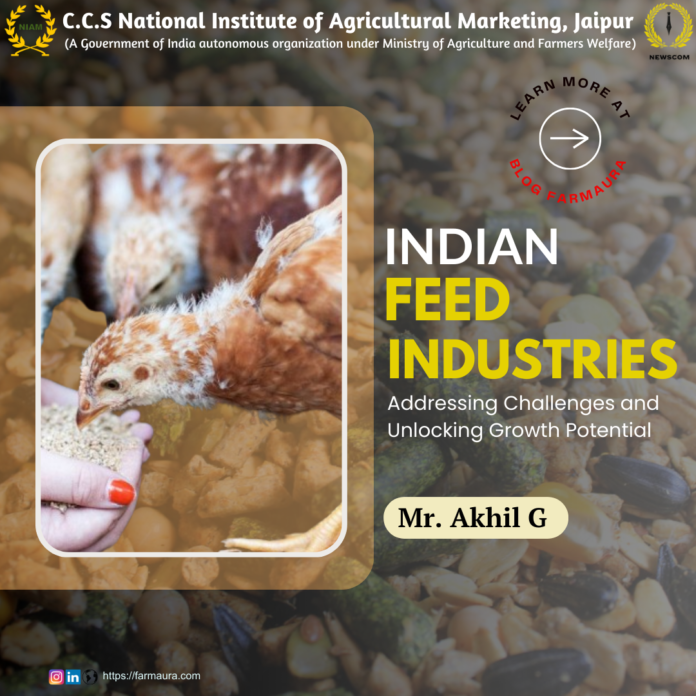The Indian feed industry a vital component of the country’s agriculture and livestock sectors. It supports the production of meat, dairy, and eggs by providing essential nutrients to farm animals. The Indian animal feed market size reached INR 1,035.2 billion in 2023. Looking forward, IMARC Group expects the market to reach INR 1,964.8 billion by 2032, exhibiting a growth rate (CAGR) of 7.2% during 2024-2032.
Addressing the Challenges in India’s Feed Industry: From Fodder Shortage to Mycotoxin Contamination
Our country has been grappling with significant fodder shortage in recent years. The problem is further exacerbated by further diminishing of land resources. However, the supply of fodder is also inconsistent due to the seasonal variations and the periods of drought which only worsens the problem. Over the past few years, India’s poultry and livestock industries have been grappling with not only a continuing shortage of fodder but also a dramatic increase in the prices of key feed materials such as corn and soymeal. The diversion of corn for feed industry creating challenges including increased corn prices putting pressure on cost of production, disruption of feed supply chain due to fluctuations in corn prices. Fluctuations in feed quality and the absence of quality control led to fluctuations in the nutritional value of feeds, which in turn impacts animal health and production. Lack of quality control measures also poses a high risk of contamination and adulteration of the products. The feed industry is confronted with various and sometimes contradictory regulations that may hamper its development. Some of the challenges include lack of clear policies, bureaucratic procedures, and lack of appropriate support structures. Mycotoxin contamination affects feed quality since it lowers its nutritional value and makes it unfit for use by animals. This may result in low feed conversion ratios and quality of animal products produced in the system.
Opportunity on the Rise: India’s Feed Industry Set for Growth
The projected growth in India’s poultry and dairy markets presents a substantial opportunity for the feed industry. With the poultry sector anticipated to grow at a compound annual growth rate (CAGR) of 8.1% from 2024 to 2032, and the dairy market expected to reach a size of around ₹31 lakh crore by 2027, there is a heightened need for premium feed. This growth in poultry and dairy demand highlights the necessity for advanced and sustainable feed solutions to enhance livestock health and productivity. As the consumption of animal-based products increases, the feed industry is well-positioned to meet this rising demand, drive innovation, and leverage the expanding market opportunities.
Conclusion:
Addressing the challenges in the Indian feed industry requires a multifaceted approach. Investing in sustainable feed alternatives can alleviate the pressure from fluctuating raw material costs. Strengthening quality control measures and adopting proper testing protocols are essential for maintaining consistent feed quality and preventing contamination. Simplifying regulatory frameworks and providing better policy support will help overcome bureaucratic hurdles. Implementing advanced technologies for detecting and managing mycotoxins will enhance feed safety and effectiveness. Together, these measures can help stabilize feed supply, improve livestock health, and support the industry’s growth amid evolving market demands and regulatory conditions.




